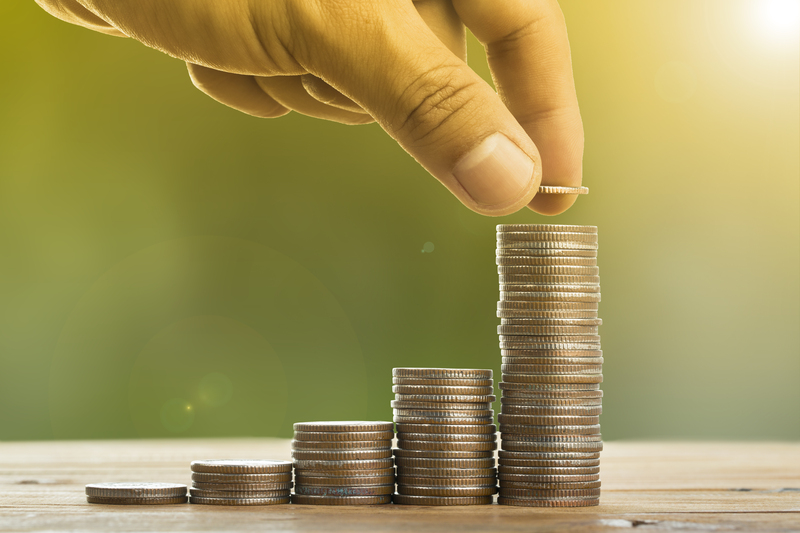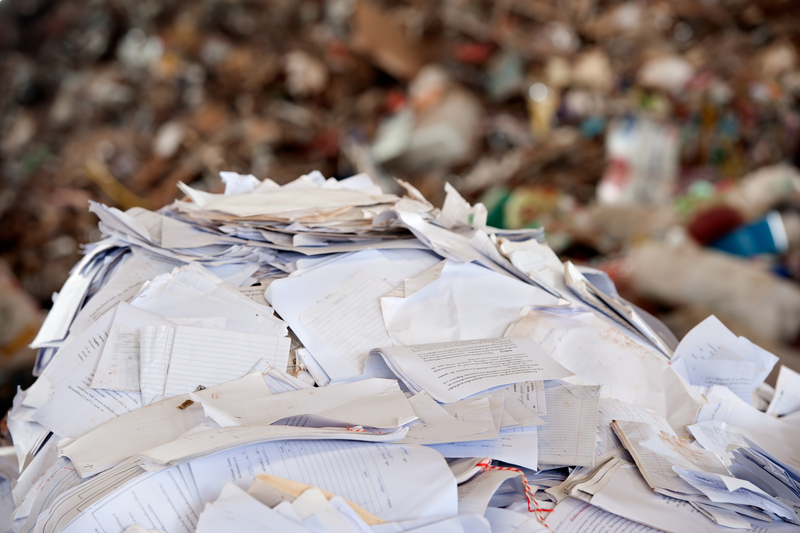Reimagining the Future of Packaging and Cardboard Disposal
In a rapidly evolving world increasingly conscious of its environmental footprint, the future of packaging and cardboard disposal is undergoing a profound transformation. As packaging continues to play a vital role in product protection, marketing, and logistics, businesses and individuals are seeking solutions that align with sustainable values. This comprehensive guide explores the latest trends, innovative technologies, and practical strategies to reimagine packaging and optimize cardboard disposal for a greener tomorrow.

Understanding the Importance of Sustainable Packaging
Consumers and companies alike are recognizing the environmental impact of traditional packaging materials, particularly cardboard. According to recent data, the world produces over 400 million tons of cardboard and paper products annually. While cardboard is highly recyclable, improper disposal, contamination, and overuse still contribute to landfill waste and deforestation.
- Environmental Impact: Traditional cardboard packaging contributes to carbon emissions, resource depletion, and pollution if not properly managed.
- Consumer Demand: Modern consumers prefer brands that adopt eco-friendly packaging and responsible disposal practices.
- Regulatory Changes: Governments are introducing stricter regulations and incentives for sustainable packaging and recycling.
Therefore, rethinking the future of packaging and cardboard disposal is more than a trend--it's a necessity.
What Is Sustainable Packaging?
Sustainable packaging involves the use of materials, processes, and designs that minimize environmental impact throughout the product's lifecycle. This includes the reduction of raw material use, recyclability, biodegradability, and regenerative sourcing.
Cardboard: A Double-Edged Sword in Packaging
Cardboard remains the packaging industry's backbone due to its affordability, lightweight nature, and protective qualities. However, its widespread use presents challenges:
- Resource Intensive: Manufacturing cardboard requires vast amounts of wood, water, and energy.
- Recycling Limitations: While recyclable, contaminated or laminated cardboard often ends up in landfills.
- Single-Use Culture: Most packaging is designed for single use, leading to excess waste.
These issues highlight the urgent need to reimagine cardboard disposal and develop innovative packaging alternatives.
Current Recycling Practices and Challenges
Most curbside recycling programs accept cardboard, but processes and outcomes vary:
- Separation is required to prevent contamination by food, oils, or other materials.
- Not all facilities can handle wax-coated or multi-layered cardboard.
- Global market fluctuations can impact the viability of recycling programs.
Despite these hurdles, recycling one ton of cardboard saves nine cubic yards of landfill space and over 46 gallons of oil.
Innovative Trends Shaping the Future of Packaging
The push to reimagine packaging and cardboard disposal has spurred innovation across materials science, design, and logistics. Here's how the future is taking shape:
1. Biodegradable and Compostable Materials
Research is accelerating into alternative packaging materials such as mushroom-based packaging, plant fibers, seaweed films, and biodegradable plastics. These materials decompose quickly without leaving toxic residues, reducing landfill burden.
- Mushroom Packaging: Mycelium combined with agricultural waste forms custom-molded, compostable packaging.
- Bagasse and Plant Fibers: Used as alternatives to corrugated cardboard for lightweight items.
- Seaweed Packaging: Edible and rapidly degrading films suitable for single-use containers.
2. Reusable Packaging Systems
Brands are increasingly introducing reusable packaging options that can be refilled, returned, or repurposed. This approach reduces the need for single-use cardboard and fosters a more circular economy.
- Retailers offer sturdy containers for multiple uses.
- Reverse logistics collect packaging after use, sanitize, and redistribute.
- Deposit-return schemes encourage consumer participation in reuse cycles.
3. Smart and Connected Packaging
Smart packaging includes technologies such as RFID tags, QR codes, and sensors, enabling real-time tracking and information sharing. These advancements facilitate more efficient logistics and encourage proper recycling and disposal.
- Track Material Lifecycles: Monitor and optimize packaging use and end-of-life processing.
- Consumer Guidance: Smart labels instruct users on how to dispose of each component responsibly.
4. Minimalist and Right-Sized Design
One critical approach to sustainable packaging is using less material while ensuring product safety. Right-sizing packages and employing design techniques like origami folding or modular components cut down on excess cardboard use.
- Custom-fit solutions reduce wasted space in shipping.
- Minimalist branding replaces unnecessary inlays and coatings.
5. Advanced Recycling Techniques
Emerging recycling methods tackle previously hard-to-recycle materials, such as waxed or heavily printed cardboard. Technologies like hydrothermal processing, enzymatic treatments, and closed-loop systems are expanding what's possible for cardboard disposal.
Best Practices for Sustainable Cardboard Use and Disposal
Optimizing the life and disposal of cardboard relies on a blend of smart consumer habits and forward-thinking business policies. Here are practical strategies to maximize sustainability and minimize waste:
For Businesses
- Choose Certified, Recycled Cardboard: Work with suppliers who use FSC-certified or high recycled content materials.
- Design for Easy Recycling: Avoid coatings, laminates, or mixed materials that hinder recycling.
- Educate Customers: Provide clear instructions for breaking down and recycling packaging properly.
- Partner with Recycling Programs: Participate in take-back schemes or support local recycling infrastructure.
- Monitor and Report: Measure packaging impact and regularly update strategies based on results.
For Consumers
- Break Down Boxes: Flatten and keep cardboard clean to ensure it's accepted by recyclers.
- Avoid Contaminating: Keep food, grease, and liquid away from packaging to maintain its recyclability.
- Reuse Whenever Possible: Repurpose sturdy boxes for storage, moving, crafts, or donations.
- Advocate for Change: Support companies and policies that prioritize sustainable packaging.
Creative Upcycling and Recycling Ideas
- Create compost bins or garden mulch from shredded cardboard.
- Build temporary furniture, cat scratchers, or children's art projects.
- Donate clean boxes to local schools, shelters, or moving companies.
Cardboard Disposal: The Circular Economy in Action
The move towards a circular economy--where resources are reused, repaired, or recycled as much as possible--is reshaping how we view cardboard disposal. In this system:
- Packaging is designed for multiple lifecycles.
- Recycling and composting are integrated with supply chains.
- Product stewardship ensures manufacturers take responsibility for end-of-life materials.
Cardboard recycling is a cornerstone of this model, but the aim is to ultimately reduce the need for virgin packaging altogether.
Government and Industry Initiatives Leading the Way
Several countries, regions, and corporations are pioneering policies and programs destined to redefine cardboard packaging and disposal:
- Extended Producer Responsibility (EPR) requires manufacturers to manage the lifecycle of their packaging waste.
- Deposit return and recycling incentives increase recovery rates and reduce litter.
- Green design standards push for minimal material usage and recycled content.
Large retailers like Amazon, IKEA, and Unilever have set ambitious targets to eliminate unnecessary packaging and improve recyclability by 2030 and beyond.
The Role of Technology in Packaging and Disposal
From blockchain-enabled supply chain transparency to AI-driven material sorting at recycling facilities, technology is accelerating the shift toward sustainable packaging and efficient cardboard disposal:
- Machine learning sorts complex materials more accurately, reducing contamination rates.
- Automation increases recycling throughput and profitability.
- Blockchain tracks the provenance and lifecycle of materials, enabling circularity.
Expect further advances in material science--including nanocellulose and active packaging--to disrupt the future of packaging in positive, sustainable ways.
Case Studies: Brands Revolutionizing Packaging Solutions
Loop: Shoppable Circular Packaging
Loop offers groceries and household goods in reusable containers, collected, sanitized, and refilled after each use. This approach drastically reduces cardboard waste and creates a closed-loop system.
IKEA's Flat-Pack Revolution
IKEA's signature flat-pack design uses right-sized, minimal cardboard, reducing shipping volume and material waste globally. The company is now introducing mushroom-based and recycled fiber alternatives.
Amazon's "Frustration-Free Packaging"
Amazon's initiative requires products to ship in their own box, avoiding over-packaging and simplifying recycling. This has eliminated over 900,000 tons of packaging material since 2008.
The Future Outlook: Towards Zero Waste Packaging
As packaging innovation accelerates and education spreads, the vision for zero-waste packaging is closer than ever:
- Smart design, advanced materials, and better recycling converge for closed-loop systems.
- All stakeholders--manufacturers, retailers, governments, and consumers--must collaborate for success.
- Investment in recycling infrastructure and consumer education are essential.
The ultimate goal is to shift from current "take-make-waste" models to a future where everything that goes into a package either returns to the earth or the supply chain.

Conclusion: Leading the Change in Packaging and Cardboard Disposal
The movement to reimagine the future of packaging and cardboard disposal is a defining challenge--and opportunity--of our era. By embracing sustainable materials, smart design, innovative disposal solutions, and collective action, businesses and individuals can drive profound change.
By choosing responsible packaging, practicing proper cardboard disposal, and advocating for greener alternatives, you are not only minimizing your own environmental footprint but also shaping a better world for future generations.
Let's reimagine packaging--because the future of our planet depends on what we throw away, and what we choose to reuse.
Key Takeaways: Building a Sustainable Packaging Future
- Prioritize recyclability and compostability in all packaging choices.
- Adopt reuse and upcycling wherever possible to extend cardboard's life.
- Support innovations and policies that encourage a circular economy.
- Stay informed and educate others on responsible packaging and disposal practices.
Reimagining packaging and cardboard disposal isn't a distant dream--it starts today, with each choice we make.